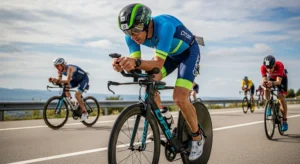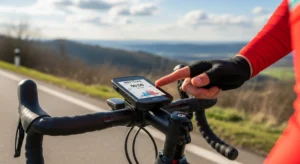Are you in the market for a power meter and are trying to figure out which direction to go? There are a number of choices these days. Hopefully, this helps you narrow down your selection.
First, it’s important to know what you are looking for in a power meter. Is cost an issue? Are you looking for accuracy and consistency? What functionality would you like it to have? Are you prepared to buy new equipment to accompany your new tool? Have you given any thought to ride analysis software? There’s a lot to think about when making a decision that can cost several thousand dollars. Let’s tackle these items one at a time. . .
Cost: We’ll start here but truth be told, I’m willing save my pennies to get the best equipment I can. It may take a little longer to get but I’d rather buy the right one rather than be sorry later. The return on investment usually pencils out, considering how much I ride. While considering SRM, PowerTap, and Quark, the costs are extremely high – well into $2,000+ range, when all is said and done. I know I’ll be putting in a lot of miles, but that’s a significant investment! Besides, I don’t have the extra budget to buy a new rear training wheel and race wheel set. Ouch! There’s also Stages, which replaces my crank arm but even that can cost up to $900 (and you have to purchase a Cannondale, Shimano, or SRAM crank).
The iBike Newton power meter worked with my existing wheels and cranks, without having to buy additional equipment. It cost just over 1/2 the price of one and 1/3 the price of the other two options and didn’t harbor surprise purchases. I like that. The iBike Newton was the clear win01084048/http://iner in the cost category.
Accuracy & Consistency: SRM was the originator of the main stream power meters. It’s owners have been satisfied with the accuracy. The same is true for PowerTap. Stages is new and questionable. It only measures the wattage generated from one crank and has been proven to be tricked by hard, asymmetrical pedaling. It also has a large smoothing factor and fewer readings per second as the top players. Accuracy, in my mind is questionable. I’m not one to buy into the marketing hype hocus pocus.
iBike is a small company that’s been around for several years now. They’ve had time to perfect their product and even sponsored the Footon Servetto team riding in the 2010 Tour de France. Owners of iBike Newton power meters are satisfied, just as SRM and PoweTap owners. One geeky note, the New iBike Newton sensors measure 16 times per second, topping even SRM or PowerTap.
Functionality: Almost all of the power meters provide the same things: Power, Calories, heart rate options, speed, etc. There are a few things that the iBike Newton powers meters measure that the others can’t: 1) Head winds and tail winds, 2) CdA and Crr, and 3) Pedaling efficiency. By measuring wind and aerodynamics, the iBike Newton can show you where your power is being distributed, not just that you’re pumping out 300 watts. That’s powerful information to know. Along with power distribution, by measuring CdA and Crr, I can hone my aero position, objectively, and be more invisible to the wind. Lastly, with iBike’s PowerStroke technology for the power meter, I can objectively analyze my pedaling style and upper body movement and make improvements.
Too boot, the iBike Newton power meter comes with a ride analysis software package name iBike Isaac. This shows you just about everything you could ever want to know about your ride: where you drafted, when you were out of the saddle, when you hit the brakes, ride profile, etc… It’s a great piece of software on its own but coming free with the power meter in the already inexpensive package is really sweet.
Simplicity: With all the SRM, PowerTap, and Quark power meters, special equipment must be purchased. In the case of the PowerTap, you need multiple sets of wheels, if you plan to race with your power meter. That doesn’t help the budget. The Stages unit requires technical expertise to dismantle cranks. Plus in all of the power meters above, you can only use it with one bike. Bummer! What if your have a Time Trial bike and a Road bike?
With the iBike Newton power meter you can set it up quickly and swap it to different bikes. It’s nice to have a second set of sensors to make the swap quickly and if you’re attaching it to a TT bike, they make a remote wind sensor to improve the accuracy. Plus, if you’re watching your bicycle weight, the iBike Newton weighs 148 grams, including the sensors. I’m not sure what the others weigh but I can only imagine their significantly heavier.
I hope this helps sort out some of the deciding factors of buying a power meter. Please contact iBikeBlog with any technical questions. I’m happy to help.
Thank you.




